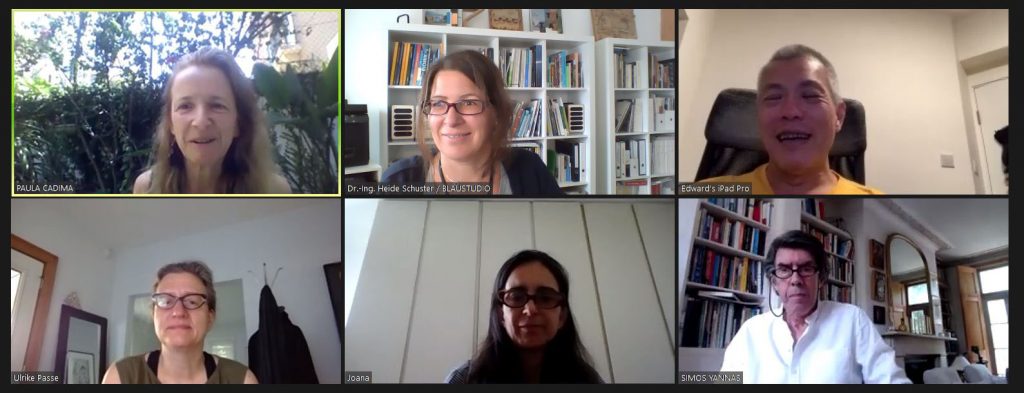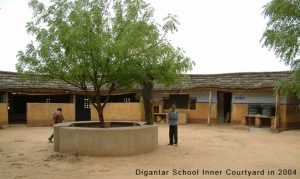
PLEA Directors met online to discuss management issues on 24th July 2020 .

PLEA Directors met online to discuss management issues on 24th July 2020 .
A new report published by researchers at Oxford Brookes University has revealed for the first time a detailed national picture of the actual performance of new build homes through a detailed analysis of building performance evaluation projects.
The report has just been released and is available here: https://www.brookes.ac.uk/about-brookes/news/state-of-the-nation-study-on-new-build-housing-reveals-gap-between-design-and-reality/
The summary of findings is available here and an online presentation about the study is available here.
The Proceedings on the 11th Windsor Conference on Thermal Comfort “Resilient Comfort” is now available on:
“Prof Brown’s timeless book “Sun, Wind & Light” has been an inspiration since I was a student. I am still using his book today when I need to advise students, professionals and governments. The PLEA community will miss him deeply, but he will be remembered.”
— Edward Ng, President of PLEA
20 Feb 2020, Hong Kong
“I studied under, worked for and then collaborated with Charlie for 30 years, including two editions of Sun, Wind & Light. I’m grateful for those many opportunities. As a young graduate student, Charlie’s methods brought mind expansion. Working with him was a challenge to order one’s thinking about the complexity of buildings, while always being a stand for the planet. It is a good voice to have in one’s ear.”
— Mark DeKay, February 2020, Knoxville, USA
The project should align with the objectives of PLEA.
The deliverable(s) of the project should benefit the PLEA community – for example, a PLEA Note.
From time to time, the PLEA Board may issue calls for proposals on a specific topic. Alternatively, PLEA Associate(s) may initiate and submit his/her/their proposal to the PLEA Board for consideration.
PLEA Associate(s) may submit his/her/their proposals jointly.
PLEA Associate(s) may submit his/her/their proposal anytime.
The proposal, not exceeding 3 pages, should contain the title, objectives, background, methodology, schedule, budget and the expected deliverables of the project. It should be submitted to the PLEA secretariat at <info@plea-arch.org>.
The maximum amount to be awarded is UKP1000.
At any one time, a PLEA associate can hold only 1 project.
The next PLEA conference will be held at A Coruña in Spain on September 2020!
Official website: https://www.plea2020.org/

The architect Nimish Patel (1948 -2018) was a highly regarded champion of the value of traditional construction techniques and skills, combining innovation and conservation, to contemporary architecture. At the PLEA Conference in Ahmedabad in 2014 his outstanding contribution was recognised in the PLEA Lifetime Achievement Award. His work epitomises the ethos of PLEA in addressing social, cultural and environmental issues through a synthesis of building form and fabric, responsive to climate and using locally available materials.
Following his training in architecture at CEPT in Ahmedabad and MIT in Cambridge Massachusetts USA, he founded the architecture practice Abhikram with his wife and partner, Parul Zaveri, in 1979. Ambhikram (which means ‘initiation’ in Sanskrit) always valued traditional construction and skills. The firm’s mission is “to explore the design directions and processes which make the built environment functionally, psychologically, environmentally and spiritually, more contextual and more comfortable for all.”
The continuity of Indian traditions was central to their numerous projects, while responding to the contemporary context. Well known for his passionate engagement in many conservation projects, Nimish also believed that the services of an architect should be available to everyone, and his work included low cost projects like the Digantar Rural School, as well as high cost projects like the Oberoi Udaivilas Hotel in Udaipur. The practice’s work included a number of naturally ventilated and passively cooled educational projects, providing comfort without relying on mechanical conditioning.
Nimish shared his knowledge and experience freely. When I first met him in 1994 he introduced me to the very long tradition of climate responsive architecture in Gujarat, including step-wells, pol-houses and havelis. He opened my eyes to the sophistication of the techniques which moderated the extremes of climate long before the development of mechanical air-conditioning. My respect and admiration for him grew through our collaboration on the Torrent Research Centre in Ahmedabad. This involved the design of passively cooled laboratories and offices for a pharmaceutical research company. He insisted in putting his principles into practice: idealistic, but also intensely pragmatic, rigorous and demanding of those with whom he collaborated.
As much as anything I valued his deep humanity. Over lunch once, when we had been rather earnestly discussing mankind’s contribution to climate change, he said; “We want to change the world, but perhaps we should start by changing ourselves”. Always direct and honest, his clear thinking informed his projects, and we can all continue to learn from his legacy.
Brian Ford
Former Director and Vice-President of PLEA
Emeritus Professor University of Nottingham, UK.
This paper proposes a new heuristic to simulate and study the visual comfort aspect in the designing of Complex Fenestration Systems. The goal of the heuristic is two-folded, (i) provide useful and simple visualization tools for preliminary glare assessments of indoor spaces, (ii) reduce the computational overhead of extremely expensive annual glare simulations by reducing the number of simulations necessary in the study of glare. The work demonstrates that through a spatial and temporal sampling of annual Vertical Illuminance data it is possible to map the potential glare POVs and to find the critical hours to conduct more detailed simulations. The authors applied the proposed heuristic in a comparative study of 3 different fenestration schemes for 3 annual sky types, a typically overcast (London, UK) and clear sky (Phoenix, AZ, USA), and an intermediate sky (Oakland, CA, USA). In sum, the results of the work show that the proposed heuristic yields a high potential to be used in design procedures that currently are based on expensive glare simulations.
With the aim of reducing carbon emissions and increasing hygrothermal comfort, buildings across the UK are undergoing energy retrofits. With historic buildings, it is important that retrofit actions have a limited negative impact on the building’s fabric and cultural significance. Work to date in the UK has focused on the retrofit of historic solid masonry construction, with little research into the retrofit of historic timber-framed buildings. Changes to these buildings must be managed through the use of established conservation principles. However, where infill panels are beyond repair or have previously been substituted with inappropriate materials, there exists the potential to retrofit a material with a higher thermal performance. Nonetheless, it must be ensured that this retrofit does not create interstitial hygrothermal conditions that could threaten the survival of surrounding historic fabric. In this paper the authors present the hygrothermal simulation and physical monitoring of three different potential replacement infill panels. Results from Glaser calculations, WUFI® Pro and WUFI® 2D are compared to measured results of physical test panels mounted between two climate-controlled chambers. Whilst all three prediction methods successfully identified interstitial condensation where it was measured to occur, major discrepancies existed both between simulated and measured results, and between different simulation methods.
Radiant heating and cooling systems have the potential to save energy and are widely used in zero net energy buildings. Their positive and negative impacts on indoor environmental quality and, in particular, thermal comfort compared to all-air systems are still debated in the literature. This paper presents indoor environmental quality survey results from 3,892 respondents in 60 office buildings located in North America. 34 (2,247 respondents) of these buildings utilized all-air systems and 26 (1,645 respondents) utilized radiant systems as primary conditioning system. Our results indicate that radiant and all-air buildings have equal indoor environmental quality, including acoustic performance, with a tendency towards improved temperature satisfaction in radiant buildings.